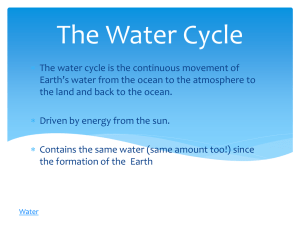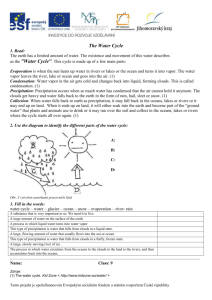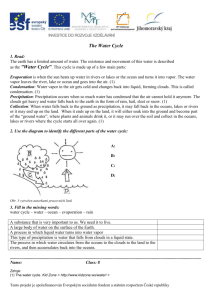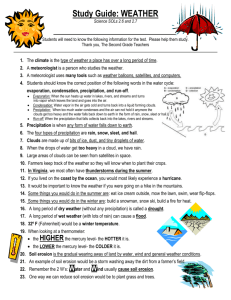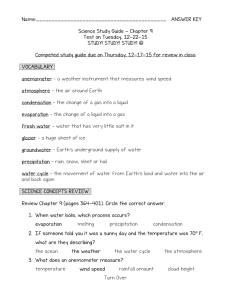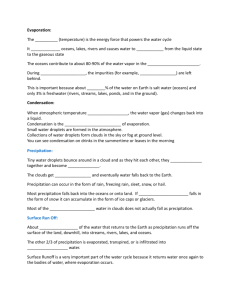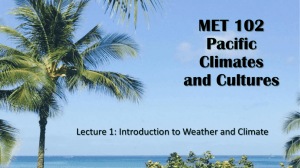Water Cycle Notes - Brookville Local Schools
advertisement
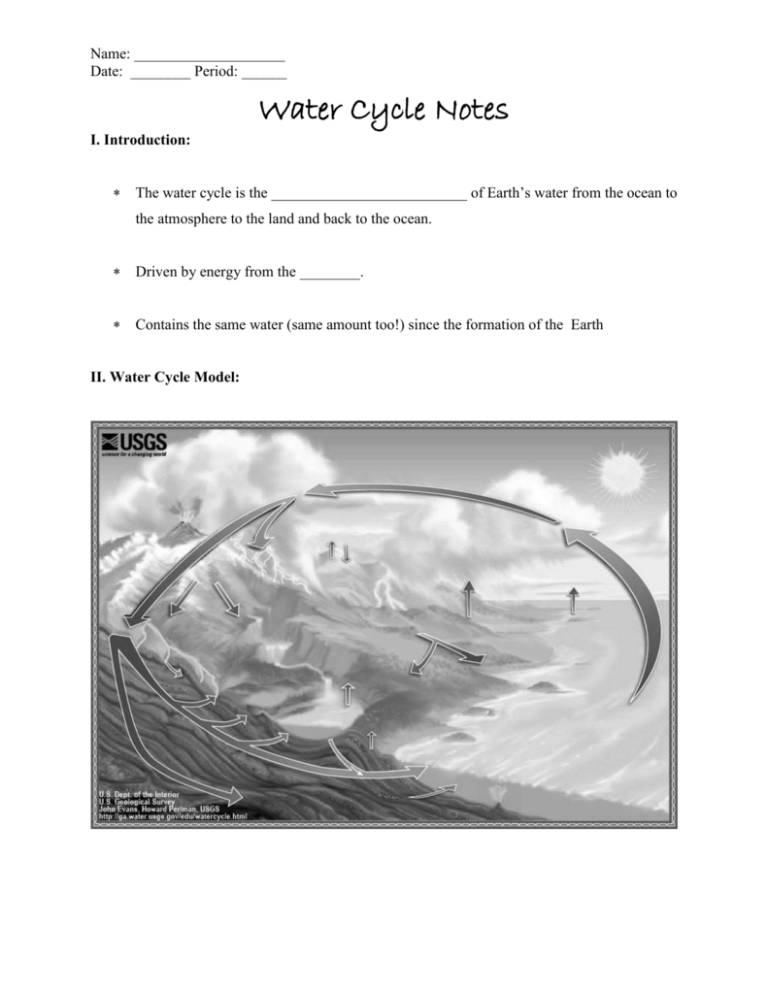
Name: ____________________ Date: ________ Period: ______ Water Cycle Notes I. Introduction: The water cycle is the __________________________ of Earth’s water from the ocean to the atmosphere to the land and back to the ocean. Driven by energy from the ________. Contains the same water (same amount too!) since the formation of the Earth II. Water Cycle Model: III. Where can water exist on the Earth? Clouds Lake ______________ _______________ Snow Water Vapor Rain _______________ ______________ _______________ Ocean * Give 2 more examples of where water could exist on Earth: ________________________________________________________________________ ________________________________________________________________________ A. Groundwater Groundwater is the part of precipitation that _______________________________ until it reaches rock material that is saturated with water. Water in the ground is stored in ____________________________________ (no, there are no underground rivers or lakes). Groundwater _____________ moves underground, generally at a ________________ (because of gravity), and may eventually seep into ___________________________. IV. Ways that Water Travels through the Water Cycle Evaporation _________________ _______________ Precipitation Infiltration Run-Off A. Evaporation The sun heats liquid water, causing it to rise into the atmosphere as _________________. Water evaporates directly from oceans, lakes, rivers, falling rain, plants, animals, and other sources where the sun may ______________ water molecules. B. Transpiration Transpiration is the process by which plants lose water out of their leaves. Similar to an animal __________________ (sweating) C. Infiltration Infiltration is the process in which water on the surface ground ____________________. The rate _______________ as the soil becomes saturated. If the precipitation rate exceeds the infiltration rate, runoff will usually occur unless there is some physical barrier. D. Condensation Condensation takes place when ___________________________ and changes into water droplets that form clouds in the atmosphere. You can see the same sort of thing at home... Pour a glass of cold water on a hot day and watch what happens. Water forms on the outside of the glass. That water didn't somehow leak through the glass! It actually came from the air. Water vapor in the warm air, turns back into liquid when it touches the cold glass E. Precipitation Precipitation occurs when so much water has _________________ that the air cannot hold it anymore. The clouds get heavy and water falls back to the earth. Precipitation forms in the follow ways: Rain Sleet Snow Hail F. Run-off Precipitation that _____________________ into streams and rivers. This water later enters the ocean, river, or lake. V. Distribution of Earth’s Water 1. Where is most of the water on earth found? _________________________ 2. What percentage of water on Earth is fresh drinking water? _________________ 3. Where most of the Earth’s freshwater located? ___________________________ VI. Amount of Water on our Earth 1. How many cubic miles of water are in the oceans, seas, and bays? ____________ 2. What percent of fresh drinking water is stuck in glaciers/ice? ________________ VII. Pollution of Water _________________ is the world's biggest health risk, and continues to threaten both quality of life and public health in the United States. When water from rain and melting snow runs off roofs and roads into our rivers, it picks up __________________, dirt, trash and disease-carrying organisms along the way. Many of our water resources also __________________________, making them vulnerable to pollution from factory farms, industrial plants, and activities like fracking. This can lead to drinking __________________________, habitat degradation and beach closures. *LIST TWO NEW THINGS THAT YOU LEARNED FROM THESE NOTES BELOW*
